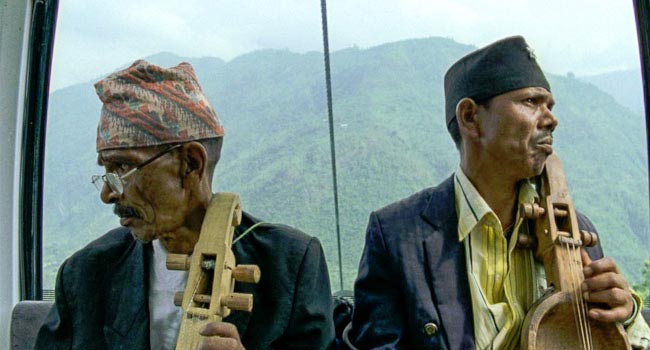
The concept may be simple, but it delves a lot deeper than most other documentaries.

The concept may be simple, but it delves a lot deeper than most other documentaries.
On paper, the description of Manakamana will have most people running in the opposite direction. Directors Stephanie Spray and Pacho Velez put a stationary camera inside a cable car that takes passengers up and down a mountain to the Manakamana temple in Nepal. They simply observed each passenger (or passengers) as they travelled towards or away from the temple. It’s nothing more than 11 rides in a row over 2 hours, with a seamless transition between each scene. It sounds like daunting viewing, which it certainly is at first, but viewers willing to stick around will get rewarded for their patience.
Manakamana is a product of Harvard’s Sensory Ethnography Lab, the same place responsible for the brilliant Leviathan (the directors of that film share a producing credit here). The approach that Spray and Velez use here isn’t nearly as experimental as that film, but it’s far less accessible. The first several rides will test people’s tolerance, as they’re mostly wordless. The first audible dialogue is heard almost a half hour in, when a woman takes the trip up for the first time with her husband.
People’s eyes will naturally focus on the changing landscapes outside of the car’s windows at first. The wide-open lands and massive mountains make for a spectacular view going up and down the ride, creating a fascinating juxtaposition with the car’s riders. The intimacy of each trip is felt as we’re locked in mere feet from the travellers, while at the same time we see nothing but miles of open space surrounding them. It’s simultaneously large and small in scale, and the way Spray/Velez use this to its full effect makes Manakamana fascinating to watch.

As we go through each successive ride, it’s easy to pick up on a few things Spray and Velez are exploring here. The sequencing of Manakamana (the riders were selected by the directors, who worked with them on other projects) highlights the existence of a vast generational gap. Older riders represent a time period that’s on the verge of disappearing completely, with most of them making comments about how people would travel to the temple before the ride’s existence. That feeling of a division between old and young is felt the most when a ride showing three older women is followed by three young, long-haired men in a rock band.
These ideas aren’t made explicit by the filmmakers either. By observing each ride, people can make their own conclusions from what they see. The amount of ideas that the film generates is surprisingly impressive. The first half, consisting of trips going up, feels slightly anxious (the sound design by Ernst Karel is especially effective here, with the periodic rattling of the cars acting like a jolt to the mostly peaceful atmosphere). It’s in the second half, where we only see people taking the trip down, that things seem to loosen up as a result of their time at the temple. One ride, with an American and Nepali woman, starts out in silence. It seems like they’re strangers at first, but it’s only until they start talking that one realizes they’re good friends.
The two rides after that, with two women trying to eat ice cream and two musicians playing together, make for some of the funniest and joyous scenes of the year. Compared to the other Sensory Ethnography Lab films, Manakamana might be their most humanist work to date, but it’s just as bold and daring as everything else they’ve made up to this point. In its observation of the cable car’s trips, it says plenty about the way spiritualism impacts people. The concept may be simple, but it delves a lot deeper than most other documentaries.